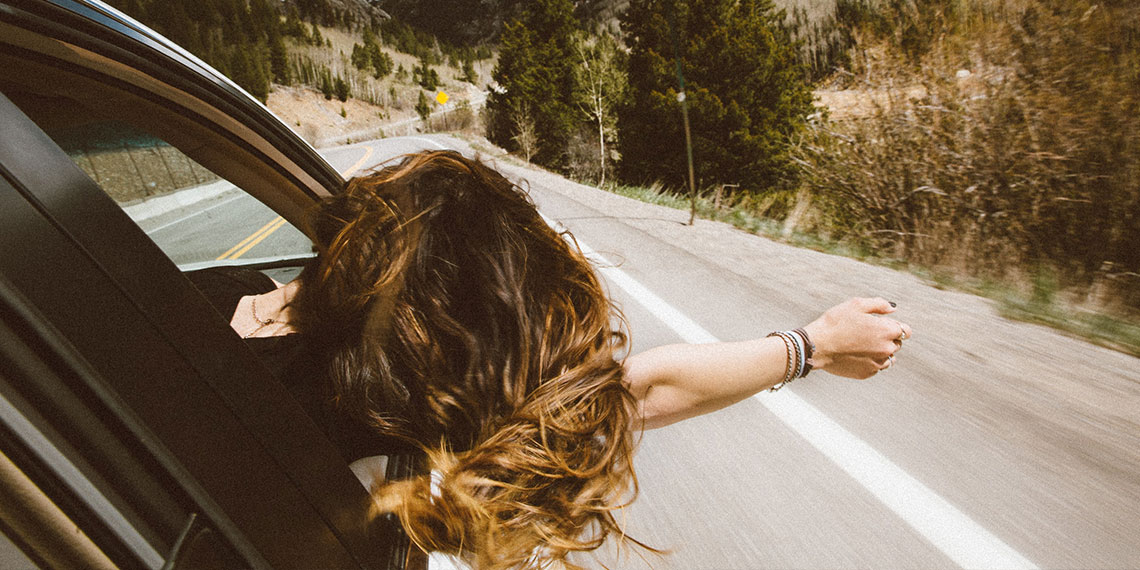Traveling during a global pandemic is a sensitive and very hot topic right now. Full disclosure: I travel for a living, so it’s part of my job to take to the roads and skies as much as possible, despite the pandemic. As someone who has recovered from COVID-19 and has recently started traveling again, I have seen the good, the bad, and the ugly sides of travel in 2020.
There are some really great improvements to travel this year, and there are some not-so-great behaviors out there. For the most realistic picture of 2020 travel, I want to share all aspects with you so you can make an informed decision about whether traveling right now is right for you. Make sure you also check out the CDC’s recommendations for travel before you go, which include tips like checking your destination’s COVID cases and travel requirements or restrictions.
Travel Improvements
Travel precautions have improved A LOT over the course of the pandemic, and airlines and hotels are doing everything in their power to keep travelers safe. One upside is that even the worst travelers are mandated to adhere to certain safety guidelines on planes, trains, and hotels.
Everyone is trying to figure out what’s acceptable during these times, but getting on a plane isn’t the pandemic red flag that many think it is. In fact, a recent study by United Airlines in partnership with the Department of Defense indicates an airplane is the safest indoor public space. It also details why the risk of exposure while onboard (even on a full flight) is almost non-existent. However, the CDC notes that spending time in airport terminals and security lines can put you into close contact with other people and contaminated surfaces, which can introduce risk.
Masks have been mandated by most governments and large industries, so that’s non-negotiable when you board a plane or enter a hotel, and there’s no arguing about it with the staff on hand—don’t even try, Karen.
Major hotel brands like Marriott and Hilton have each come out with their own new safety standards that include PPE for employees, and new sanitization procedures for hotel rooms. I have recently stayed at both the Conrad New York Downtown and the JW Marriott Cancun Resort and Spa. Both properties are going above and beyond to make COVID-conscious travelers like myself feel safe and protected. These include measures such as extra sanitizing, mask requirements, and even waiting 24-48 hours to turn rooms over between guests, so that the cleaning staff is less likely to be exposed to germs.
Some destinations are being recognized by the World Trade and Tourism Council for their commitment to keeping travelers safe and healthy. The Phillippines just became the 100th destination to receive the “Safe Travels Stamp” of approval from the WTTC. Other “safe” destinations include Aruba, Costa Rica, Ecuador, Indonesia, and parts of Mexico. Destinations are even limiting the number of guests allowed in a hotel. When I was in Cancun, the state of Quintana Roo was limiting properties to a maximum of 30% occupancy.
Travel Drawbacks
As with anything, though, there will always be a loud minority who can ruin it for the rest of us. I’ve seen some pretty bad behavior during my recent travels. Unfortunately, we live in a world with a lot of entitled people who care more about their “personal liberties” than the safety of others. Guidelines are just obstacles to them, and they don’t give a sh*t about endangering your health or making things difficult for those who have to enforce the rules.
Even when rules are in place, there are people who will look for the loophole. For instance, you are allowed to remove your mask while eating or drinking, so I’ve seen people nurse the same drink over a period of several hours in airport lounges and on planes. Some will take a sip whenever someone approaches them; others don’t even bother to pretend. You can bet I’ve sent in a few submissions of these maskless jerks to @PassengerShaming.
In some areas, those entitled people are actually a majority, and certain states and cities have refused to put mask mandates in place. As of today, 34 U.S. states require masks in public. You can bet I won’t be promoting or visiting the other 16 states that don’t care about the health and well-being of their residents or visitors. In my opinion, it is a necessary burden of traveling to do the research on destinations and support those that are taking this pandemic seriously.
The Future of Travel
The sad truth is, the travel industry is forever changed. We’ve seen huge downturns before with 9/11 and the 2008 recession, so it’s not hopeless—travel always comes back. But there are businesses that survived those downturns that won’t survive this pandemic. Landmark hotels like the Hilton Times Square and the W New York Downtown are closing for good. Closures like this mean fewer options for travelers. We will have fewer hotels to choose from, fewer airline routes, and fewer destinations open to Americans than ever before.
Also, a U.S. passport used to be a golden ticket to nearly any destination, but that’s no longer the case, as we’re not managing this crisis as well as other countries. In fact, we are only welcomed into approximately a dozen countries at the moment, which would have been unthinkable before this year.
On the bright side, cleanliness will never be taken for granted again. Passengers won’t settle for crusty airplane seats or dirty lavatories ever again. Fastidious cleaning procedures are here to stay, and that’s a “new normal” we can all embrace.
It’s not all doom and gloom in the travel industry. While urban destinations like Chicago and New York have suffered greatly, other destinations are booming. Mountain resort towns like Aspen, Park City, and Jackson Hole are seeing record numbers of tourists escaping the restrictions of urban environments for fresh air and outdoor adventure. Hotels, restaurants, and tours are booming with summer visitors, and many people are already planning their annual ski trips.
So, this isn’t the end of the travel industry, but a definite shift for everyone. By traveling safely and responsibly, we can show our support for the three-trillion-dollar industry that so many families rely on. Getting COVID tests and donning PPE is a bit of extra work, but it beats watching our favorite places slide into bankruptcy.
If you’re about to travel, hopefully you have a greater understanding of what to expect when you catch your next flight. If you’re not ready, that’s okay too; we’re all figuring this year out as we go.
Image: averie woodward / Unsplash; trustedtravelgirl / Instagram






















































